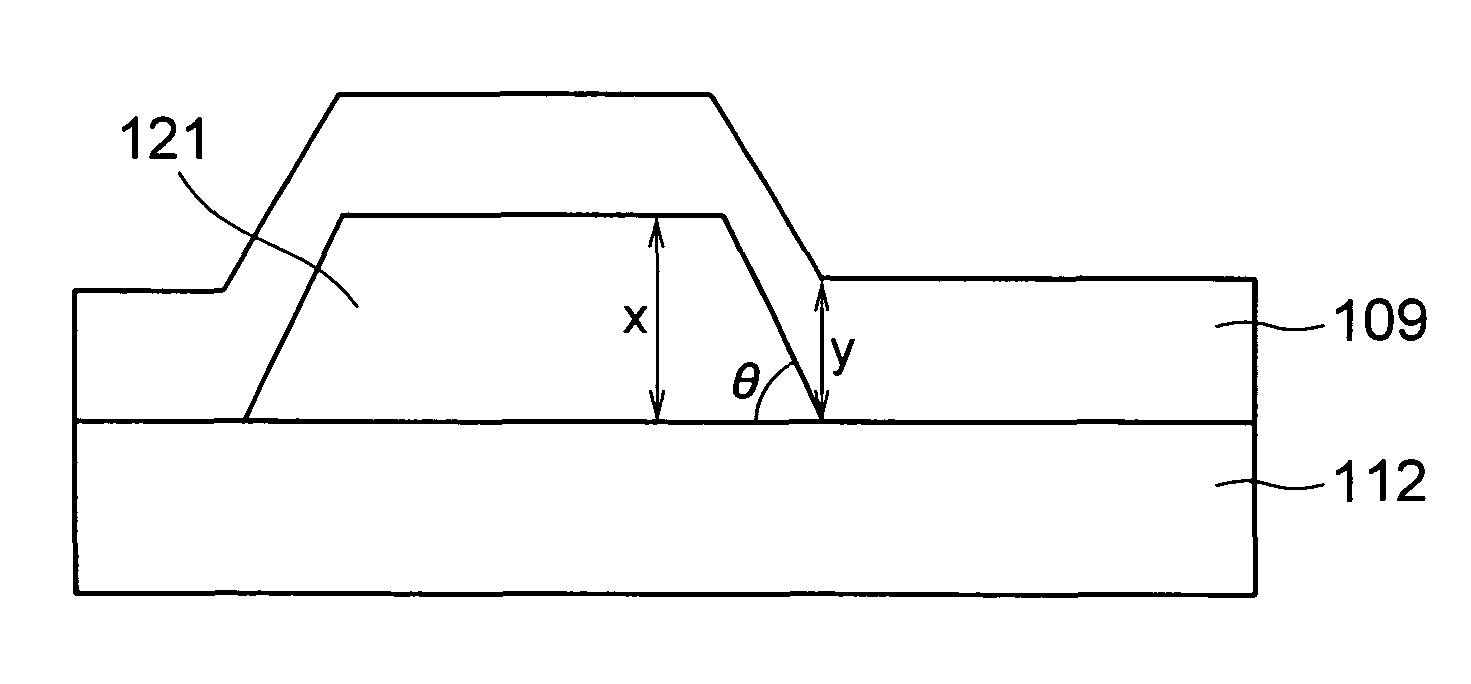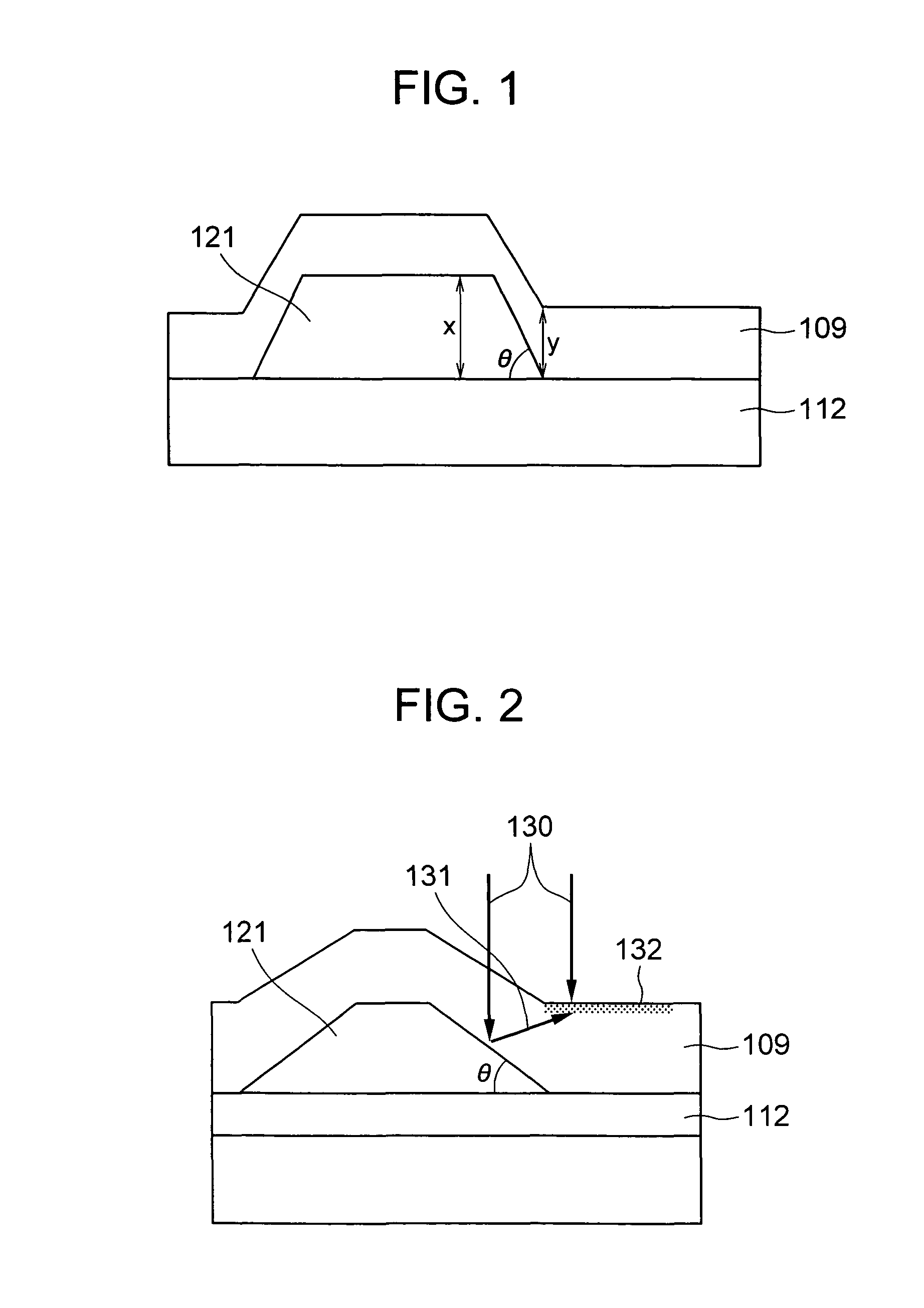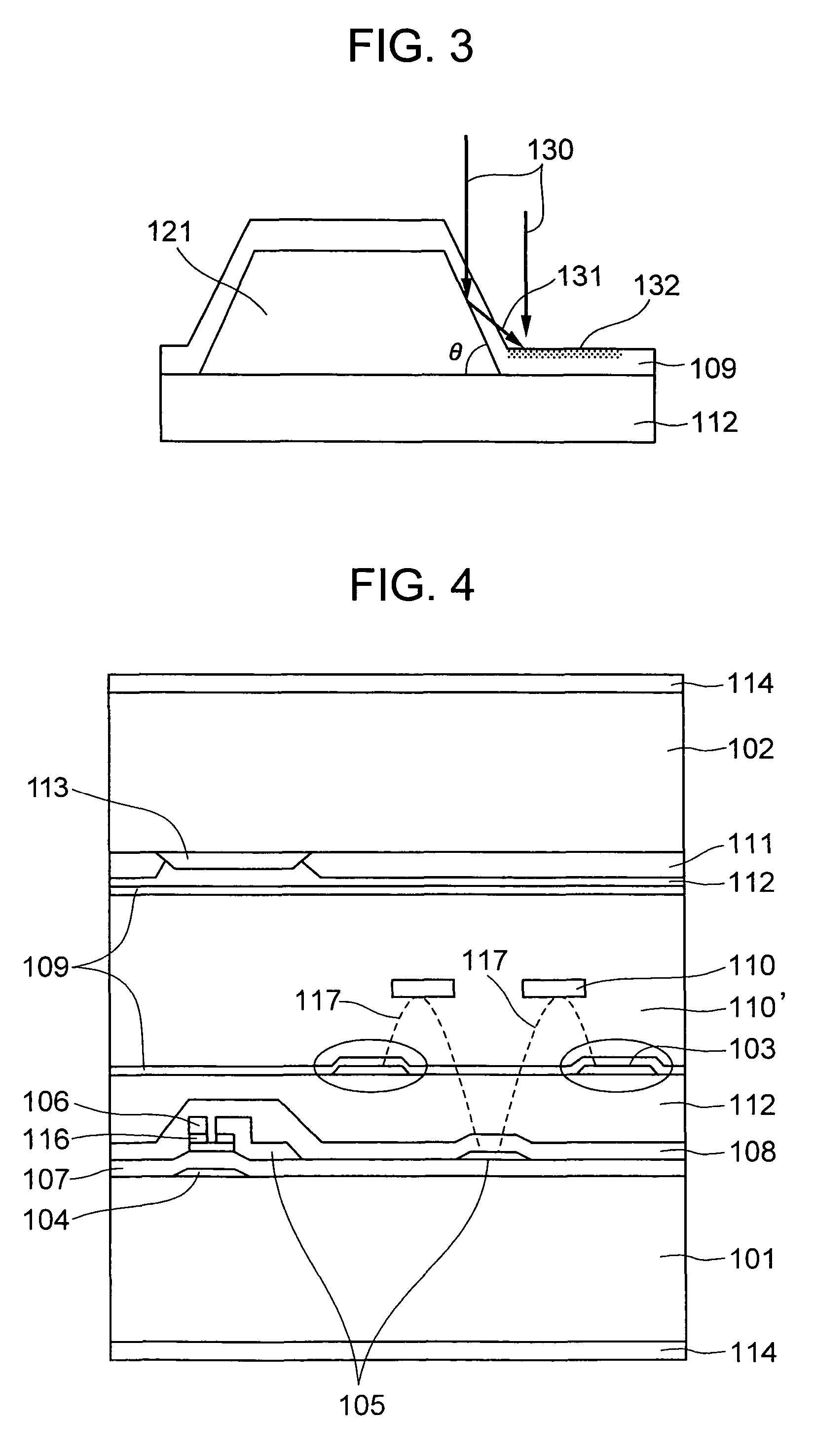Liquid crystal display apparatus for performing alignment process by irradiating light
a liquid crystal display and alignment process technology, applied in non-linear optics, instruments, optics, etc., can solve the problems of uneven display units, unsuitable electrode ends, and display defects, and achieve the effects of reducing the occurrence of display defects due to variations in the direction of initial alignment, high image quality, and improved contrast ratio
- Summary
- Abstract
- Description
- Claims
- Application Information
AI Technical Summary
Benefits of technology
Problems solved by technology
Method used
Image
Examples
first specific example
[0090]The first specific example corresponds to the liquid crystal display according to the first embodiment of the invention described above. The first specific example of the invention is explained in detail with reference to FIGS. 4 and 5A, 5B, 5C.
[0091]A liquid crystal display according to the first specific example of the invention is fabricated in the manner described below. Specifically, a glass substrate having a polished surface as thick as 0.7 mm is used as a glass substrate 101 making up an active matrix glass substrate and a glass substrate 102 making up an opposite substrate (color filter substrate). A thin-film transistor 115 formed on the glass substrate 101 includes source electrodes 105, signal electrodes 106, a scanning electrode 104 and a semiconductor film 116. The scanning electrode 104, the common electrode wiring 120, the signal electrodes 106 and the source electrodes 105 are all formed by patterning a chromium film. The interval between a source electrode 10...
second specific example
[0102]According to the second specific example, in forming the scanning electrode 104, the common electrode wiring 120, the signal electrode 106 and the source electrodes 105 under the organic insulating film 112, the the taper angle at the ends of these electrodes was set to less than 45 degrees by adjusting the etching conditions. With the other points set similar way to the corresponding points of the first specific example, six IPS-TFT-LCDs were test produced. The thickness of each common electrode 103 is about 50 nm, and that of the alignment layers formed on the two substrates about 80 nm.
[0103]The display quality of these six liquid crystal displays was evaluated, and it was confirmed that these liquid crystal displays are of two categories. In one category, the contrast ratio was 400 or more over the whole surface and the display uniformity was high. In the other category, the contrast ratio is less than 240, light leaks at the electrode edges and the display uniformity is l...
third specific example
[0107]According to the third specific example, like in the first specific example, six IPS-TFT-LCD were test produced. The thickness of the common electrode 103 was about 100 nm, and the thickness of the alignment layers 109 formed on the upper and lower substrates was 85 nm.
[0108]Next, the display quality of the six liquid crystal displays was evaluated, and it was confirmed that these liquid crystal displays are of two categories. In one category, the contrast ratio was 410 or more over the whole surface and the display uniformity was high. In the other category, the contrast ratio is less than 245, light leaks at the electrode edges and the display uniformity is low. With regard to these liquid crystal displays, the observation of the cross section under SEM and the measurement taken of the taper angle at the ends of the common electrode 103 having an alignment layer on the surface thereof showed that the display uniformity is satisfactory for the liquid crystal displays which sa...
PUM
| Property | Measurement | Unit |
|---|---|---|
| taper angle | aaaaa | aaaaa |
| taper angle | aaaaa | aaaaa |
| thickness | aaaaa | aaaaa |
Abstract
Description
Claims
Application Information
 Login to View More
Login to View More - R&D
- Intellectual Property
- Life Sciences
- Materials
- Tech Scout
- Unparalleled Data Quality
- Higher Quality Content
- 60% Fewer Hallucinations
Browse by: Latest US Patents, China's latest patents, Technical Efficacy Thesaurus, Application Domain, Technology Topic, Popular Technical Reports.
© 2025 PatSnap. All rights reserved.Legal|Privacy policy|Modern Slavery Act Transparency Statement|Sitemap|About US| Contact US: help@patsnap.com



